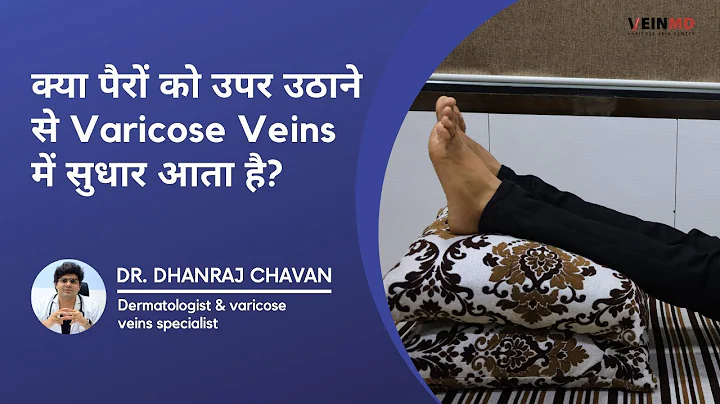Create Your Own Ultralight DCF Tent for Outdoor Adventures
Table of Contents
- Introduction
- Project Goals
- Materials Needed
- Tent Design and Construction Process
- Choosing the Fabric
- Layout and Cutting
- Sewing the Panels
- Attaching the Zipper
- Creating the Front Panel
- Reinforcing Seams and Adding Patches
- Finishing Touches
- Tent Weight and Additional Features
- Conclusion
Introduction
Are you an outdoor enthusiast who loves hiking and exploring the wilderness? If so, you understand the importance of having a reliable tent that can withstand various weather conditions. In this article, we will take you on a journey of designing and constructing your very own one-person tent. With the right materials and a little bit of creativity, you can build a tent that is not only strong and durable but also lightweight and comfortable. Join us as we guide you step-by-step through the process of creating the perfect tent for your wilderness adventures.
Project Goals
Before we dive into the details of building the tent, let's first discuss the goals and requirements we had in mind during this project. Our aim was to design a one-person tent that would excel in the following areas:
- Strength: The tent should be able to handle high winds and moderate snow loads.
- Size and Comfort: It should be large enough to accommodate both the hiker and their gear comfortably.
- Ergonomics and Efficiency: The tent's design should be ergonomic and efficient, maximizing space utilization.
- Simplicity: The design should be simple, minimal, and easy to assemble.
- Lightweight: The tent should be lightweight, making it easy to carry during long hikes.
Materials Needed
To get started with the project, you will need the following materials:
- Dyneema Composite Fabric (DCF): 7.5 yards of half-ounce DCF and less than half a yard of 2.92 ounce DCF hybrid.
- Waterproof Zipper: A 5-foot section of number three waterproof zipper with double zipper pulls.
- Z-Line and Line Locks: 20 feet of 1.3-millimeter Z-Line and 8 Line Lock V-line adjusters.
- Seam Tape: Approximately 432 inches of single-side one-inch Dyneema Composite Fabric seam tape.
- PSA Tape: Three yards of double-sided PSA tape for Dyneema Composite Fabric.
- Adhesive Transfer Tape: About a yard of half-inch adhesive transfer tape.
- Webbing: Less than a yard of half-inch webbing.
Please note that the materials mentioned above are based on our project specifications. You may adjust the quantities and specifications of the materials based on your requirements and the conditions in which you intend to use your tent.
Pros:
- Dyneema Composite Fabric is incredibly strong and lightweight, making it an ideal choice for outdoor gear.
- The waterproof zipper ensures that your tent remains dry during rain or snowfall.
- The use of seam tape and adhesive transfer tape helps create strong and durable seams.
- The lightweight webbing adds reinforcement to critical areas of the tent, enhancing its stability.
Cons:
- Dyneema Composite Fabric can be expensive compared to other materials.
- Constructing the tent requires some sewing skills and equipment.
- The design may not be suitable for extreme weather conditions or larger groups.
Now that we have all the necessary materials, let's dive into the step-by-step process of building your very own tent.
Tent Design and Construction Process
Choosing the Fabric
When selecting the fabric for your tent, it's crucial to consider the worst weather conditions you may encounter during your hikes. We chose Dyneema Composite Fabric for its excellent strength-to-weight ratio and waterproof properties. However, if you plan to use the tent in four-season conditions, we recommend opting for a heavier DCF variant like 10.8 ounce or 1 ounce DCF for added durability.
Layout and Cutting
To start building the tent, lay out the seven and a half yards of DCF fabric in a large room. Remove the selvage and mark out the corners of your panels using the pattern layout as a guide. Take precise measurements and cut out the panels accordingly. Pay attention to the straightness and alignment of the lines to ensure accurate cuts.
Sewing the Panels
Begin by sewing the side panels to the back panel, making sure to align the edges perfectly. Use a strong and durable thread to ensure the seams can withstand the tension put on them. Reinforce the seams at the peak of the tent, where extra strength is required. Allow the seams to cure for at least three days before applying any tension.
Attaching the Zipper
Fold the corners of the door panels and sew the waterproof zipper onto them. Flip the zipper teeth outward and sew additional lines of stitching to secure it firmly. Ensure there is some excess zipper at the bottom of the doors for easy opening and closing.
Creating the Front Panel
Cut out a triangular section on the DCF hybrid fabric, matching the size of the front upper panel. Attach a webbing strip to the polyester side of the DCF hybrid panel and sew it in place. Place the front upper panel on top of the doors, tape everything together, and sew the panels together. Be careful to align the panels and maintain the correct tension during sewing.
Reinforcing Seams and Adding Patches
To strengthen the tent, reinforce the seams at the peak and apply seam tape along the sewn seams. Cut circular patches from the DCF hybrid fabric and sew them to the corners of the tent. This will provide additional durability and protection. Seal the ends of the patches to prevent fraying.
Finishing Touches
Apply DCF tape over the sewn-on patches and finish taping the seams. Leave the bottom corners of the tent untaped for easy setup and takedown. Once you have completed all the steps, your tent is now functional and ready for adventure.
Tent Weight and Additional Features
At this stage, your tent weighs approximately 7.7 ounces. However, the complete weight may vary depending on additional features and accessories you choose to include. For example, carbon fiber stakes, guy-out points, a bug mesh floor, bathtub floor, and toggles to hold the doors back can be added based on your personal preferences and requirements.
Please note that adding these features may increase the overall weight of the tent but can enhance its functionality and comfort.
Conclusion
Building your own tent allows you to create a custom-made shelter tailored to your specific needs. By following the step-by-step process outlined in this article, you can design and construct a sturdy, lightweight, and comfortable tent for your wilderness adventures. Remember to choose the appropriate fabric, pay attention to detail during the construction process, and consider additional features that can enhance your outdoor experience. Now, get ready to embark on thrilling hikes and camping trips with a tent that you built with your own hands.
FAQ
Q: How long does it take to build the tent?
A: The construction time will vary depending on your sewing skills and experience. It may take several hours or a couple of days to complete the entire tent-building process.
Q: Can I make the tent larger to accommodate two people?
A: This particular design is intended for one person, but you can modify the dimensions and layout to accommodate two individuals. Keep in mind that additional considerations, such as increased weight and reinforcement, might be required.
Q: Is sewing experience necessary to build the tent?
A: Basic sewing skills are recommended for this project. If you are not familiar with sewing, it might be helpful to seek guidance from someone with sewing expertise.
Q: Are there any other fabric options besides DCF?
A: While DCF is popular among outdoor enthusiasts, other materials like silnylon or ripstop nylon can be used. However, keep in mind that different fabrics may require adjustments in the construction process and have varying levels of durability and weight.
Q: Can I personalize the design of the tent?
A: Absolutely! Feel free to experiment with different color combinations, add custom features, or modify the design to suit your preferences. Just ensure that any changes you make do not compromise the structural integrity of the tent.
Resources







